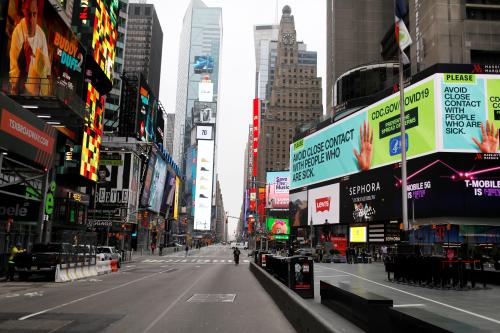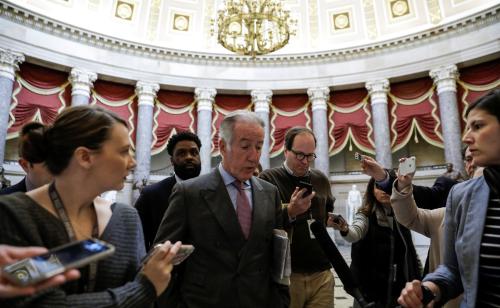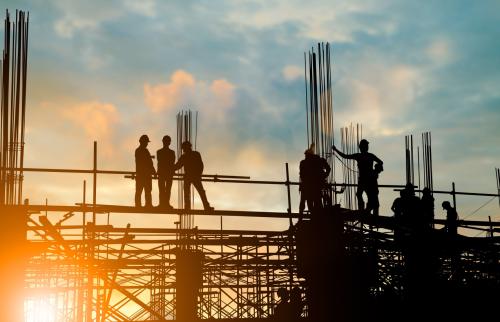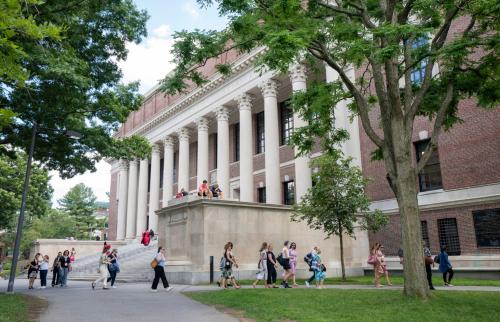This article was originally published on Barron’s on March 20, 2020.
The Covid-19 crisis has rightly made saving lives a top priority. In the process, the economy is collapsing. As people stop traveling, going to restaurants, and shopping, and as businesses see their sales plummet, the economy will almost surely take a deep dive. Vulnerable groups, such as the homeless and the poor, will be made even more vulnerable, and the broader middle class will feel the pain as well. Not since the 1930s has the middle class faced such a serious economic threat.
When a crisis comes—whether to an individual, a group, or an entire society—starting points matter. Those who have prepared and have some reserves fare better than those who have not. What is most striking about the U.S. right now is how little has been done to get ready for this or any other crisis. Not only is our health care system ill-prepared for what is coming, but our debt is too high, our infrastructure crumbling, our safety net fragile, and our middle class poorly positioned to weather the storm. Because of an inadequately prepared health care system, the authorities are trying to “flatten the curve” of infection rates. But that unfortunately may prolong the economic distress.
Middle-class income growth has been subpar for decades. Not only has it failed to keep pace with income growth at the top, but it has, more surprisingly, even lagged income growth among the bottom fifth of the income distribution. Specifically,income growthfor the middle 60 percent of the distribution (those with incomes between $40,00 and $154,000 for a household of three) grew by 47 percent from 1979 to 2016 after accounting for taxes and transfers. Most of the growth in middle-class incomes was created by more women going to work and earning higher wages. That source of growth cannot continue forever and has now fallen behind that of other advanced countries.
What happens to middle class incomes if, as expected, Covid-19 leads to a deep recession? It’s impossible to say with any certainty since so much will depend on the trajectory of the health crisis itself and on what is done to mitigate its economic effects. We are at the very beginning of what may be the worst of times since the Great Depression. But what we do now can alter that outcome.
The last recession was triggered by a financial crisis that then spilled over into the broader economy. This time around we are likely to see the reverse. But the biggest lesson from the Great Recession that began in 2008 is the importance of acting quickly and with enough fiscal stimulus to prevent a prolonged decline.
The Fed has already lowered interest rates and has other tools at its disposal to keep credit flowing, but it cannot offset the sharp if temporary decline in spending we are now likely to see. That will require fiscal measures, including getting money into the hands of middle-class families, not just because they need it but because they are the backbone of the economy, the group that keeps demand strong, without whom businesses will not survive. Consumer spending is 70 percent of GDP. People don’t buy cars or furniture or anything much beyond necessities when they don’t have jobs, when their hours have been curtailed, or when they are uncertain about the future. If, on top of that, they are busy with children home from school, an elderly relative whose treatment has been postponed by an overwhelmed health care system, or are simply hunkered down at home, their ability and willingness to spend is further reduced.
Congress seems inclined to act quickly to provide outright cash, unemployment insurance, and other forms of assistance to households. The price tag will be high—likely a trillion dollars and perhaps a lot more. What about the effects of all this assistance on an-already high federal debt? That must be a concern over the longer run. But now is not the time to worry about it. What needs to be understood is that a failure to act quickly and boldly now could produce a much bigger decline that would permanently harm both households and the economy and prolong the pain. We need to understand that temporary deficits to save the economy are very different from those that are permanent because we have more government than we are willing to pay for.
Given the economic uncertainties about how long and how deep any recession will be, and the inevitable political squabbles over how much and what kind of assistance to provide, the best approach would be to condition the amount and timing of any assistance on the unemployment rate or some other metric of economic health. Such triggers help to reduce the need for political haggling and provide some assurance to financial markets and households that help will be provided if and when it is needed—but only if it is needed. While automatic triggers reduce the ability of policymakers to tailor assistance in ways that get it to just the right places, they also limit the ability of special interests to affect the process. They reassure citizens that their fate will not be determined by a much-distrusted political class.
In addition to worrying about household incomes, there should be a focus on assets as well. One way to weather the loss of wages or self-employment income is to draw down savings. But the middle class is increasingly living paycheck to paycheck. Savings as a percent of disposable income has decreased from 13% to 8% since 1973. The median amount of wealth (defined as total assets less total liabilities) held by themiddle class is $87,000. But liquid assets, meaning checking accounts, money market accounts, savings accounts, and prepaid cards average only $4,000. The Federal Reserveestimates that 6 in 10 households don’t have enough saved to cover three months of expenses.
In this context, what is needed is not just an infusion of cash to help support both families and the economy through this period, but a willingness on the part of creditors to defer the repayment of student loans, credit card debt, mortgage payments, and the like. Requiring people to keep current may simply drive them into bankruptcy and further undermine their ability to pay over the longer term. Small businesses and the self-employed especially need this kind of forbearance if they are to remain viable once the crisis has passed. The American middle class may contain a few deadbeats or others who will take advantage of such forbearance to cheat the system, but the vast majority will repay their debts.
For similar reasons, states must be made whole. They are on the front lines of the crisis and unlike the federal government, they are required to balance their budgets and cannot borrow unlimited amounts. A higher federal matching rate for Medicaid expenditures, for example, is a top priority. Without it, states would have grave difficulty in meeting both the health crisis and the sharp drop in revenues created by a declining economy. Spending cuts or revenue increases at the local level would only worsen the economic downturn.
One interesting facet of this crisis is the number of people who are now working from home. I estimate that somewhere between half and two-thirds of the existing labor force should be able to do this, at least much of the time, but are not permitted to do so because of inertia and fear of malingering. One thing we will learn during this period is whether we should be moving more aggressively to offer employees this option and perhaps increase the ability of parents or the disabled to work more in the process. Telecommuting has the potential to reduce business costs for facilities, lessen commuting time, and improve the environment.
My conclusion is that, if handled right, the economic threat to middle class incomes and assets will be temporary and the economy will likely rebound strongly once the immediate crisis is past. Pent-up demand for goods and service will eventually create a surge of new spending, creating jobs, and higher incomes that will allow households to repair their balance sheets, repay their debts, and face a brighter economic future. Other positive consequences of the crisis could be a stronger recognition of the need to get our fiscal house in order, the feasibility of telecommuting, and the need to provide paid sick leave to more workers as one way to reduce the contagion of all viruses, not just Covid-19.







Commentary
Op-edThe middle class faces its greatest threat since the 1930s
March 20, 2020